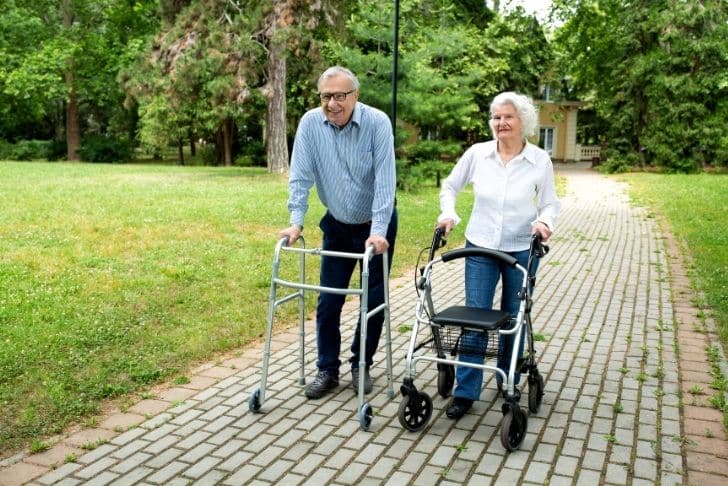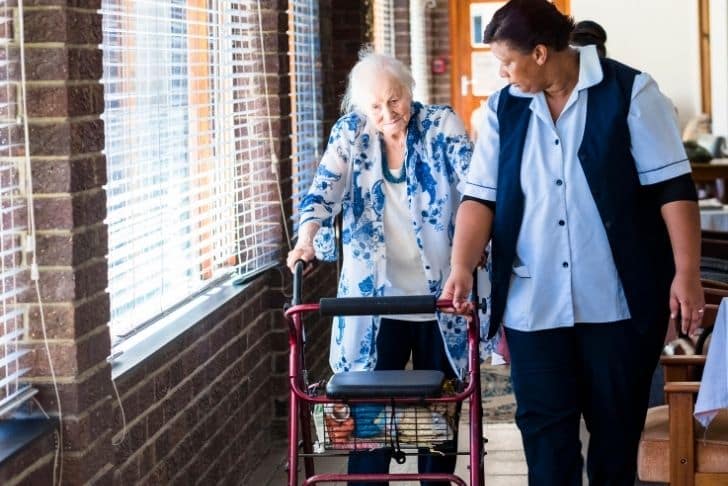
Understanding Senior Mobility Challenges
As you age, your mobility dramatically changes. These challenges arise due to a wide variety of factors that are inherent to the aging process such as the weakening of joints, atrophied muscles, dizziness, nerve issues, foot pain, and confusion. These elements can collectively contribute to falls, injuries, or worse, severely compromising the Quality of Life for you or an elderly loved one.
Identifying Causes of Reduced Senior Mobility
Reduced mobility in seniors is generally caused by a combination of physical, neurological, and environmental factors. It could be due to degenerative joint diseases, cardiovascular conditions, neurological disorders, among others. It could also be the result of side effects of certain medications, which could cause dizziness or drowsiness.
Recognizing the Impact of Falls and Injuries on Mobility
Falls and injuries are perhaps the most significant and dangerous challenges related to senior mobility. Injuries from falls can lead to long-term disabilities, decreased independence, and a decreased quality of life. Furthermore, the fear of falling can cause anxiety and deter seniors from engaging in physical activity, therefore leading to a further decline in mobility.
Highlighting the Risks Linked to Reduced Senior Mobility
Reduced senior mobility significantly increases the risk for numerous health complications. These can affect both your physical and psychological health, making it more challenging to make the most out of your senior years. Reduced mobility can cause social isolation, depression, cardiovascular diseases, and increased susceptibility to falling, which resulted in fractures and severe injuries.
Recognizing the Importance of Senior Mobility Aids
To mitigate these risks and improve quality of life, there are a variety of mobility aids that can help seniors navigate their environment safely. These aids serve to enhance balance, provide support, and reduce the risk of injuries from falls, offering a substantial benefit for seniors.
Highlighting CDC Statistics on Senior Falls
According to the Center for Disease Control and Prevention (CDC), one in four seniors falls each year. This translates to about 36 million falls, resulting in around 32,000 deaths annually. Of these falls, 20% result in severe injuries like head injuries or broken bones. Evidently, the importance of senior mobility aids cannot be understated.
Understanding the Impact of Injuries on Senior Mobility
Injuries caused by falls can be devastating. Seniors heal more slowly, and immobilization can lead to muscle atrophy and further agility. Injuries like hip fractures can cause long-lasting damage, and due to the reduced healing capacity of elderly adults, they can have severe negative effects on long-term mobility.
Discussing the Risk of further Health Complications due to Reduced Mobility
Reduced mobility can lead to a variety of further health complications. For instance, prolonged immobility can increase the risk of blood clots, muscle weakness, and pressure sores. Additionally, it can lead to higher mortality rates associated with major surgeries and complications with anesthesia.
Choosing the Right Mobility Aids for Seniors
When it comes to Choosing the Right mobility aids, there is no one-size-fits-all solution. The choice will largely depend on individual needs, health conditions, and personal preferences.
Factors to Consider When Selecting Mobility Aids
Physical and cognitive abilities, the severity of mobility issues, user preferences, and environmental factors are some of the key considerations when selecting a mobility aid for seniors. It’s paramount to choose an aid that fits well, is comfortable to use, and is suitable for the intended environment—whether that be within the home or outside.
Exploring Different Types of Mobility Aids
There’s a broad range of mobility aids available, ranging from the flexible use of canes to the comprehensive assistance from wheelchairs. The different types cater to different levels of mobility restriction, thus it’s essential to understand the benefits of each kind of aid.
Government Assistance with Acquisition of Mobility Aids
Several government programs like Medicaid provide assistance, as well as some local charities. These bodies may cover part or all of the equipment expenses, thereby providing a measure of financial relief for seniors or their caregivers.
Examining the Benefits and Limitations of Canes
Canes are perhaps the most recognized mobility aids and offer a great deal of support for individuals experiencing mild to moderate balance issues.
Why Canes are Popular Mobility Aids
Canes are prevalent due to their simplicity, affordability, and effectiveness. They provide additional support when walking or standing and are often the first mobility aid that seniors turn to as their mobility starts to decline.
Understanding How Canes Aid in Walking and Standing
Canes offer a third point of contact with the ground, which increases stability and balance. They can take some weight off from the lower body, which is especially beneficial for individuals who have one side weaker or more painful than the other.
Choosing the Right Cane for Senior Needs
Choosing the right cane requires considering several factors such as height, grip style, tip style, and weight capacity. Ensuring the cane is the right height and proportionate to the individual’s height is crucial for effective use.

Discussing Walkers as Mobility Aids
Walkers are another common and popular mobility aid, providing superior stability compared to canes.
Understanding the Design and Utility of Walkers
Walkers are designed with a four-point base, which provides excellent stability and balance. They come in different styles and designs, with some models featuring wheels or glides on the bottom to make maneuvering easier.
The Benefits and Drawbacks of Early Adaptation to Walkers
Adopting walkers early can significantly lower the chances of falls for seniors. However, they can sometimes be seen as a symbol of frailty and, for some, accepting the need for a walker can be emotionally challenging.
Considerations When Opting for Walkers
When choosing a walker, aspects such as the individual’s balance, upper body strength, and the walker’s weight and adaptability to different environments should be considered.
Utility and Advantages of Rollators
Rollators are essentially walkers on wheels. They come with various extra features and beneficial additions for users.
Comparing Rollators to Walkers
Unlike walkers, rollators include a seat that provides the user with the opportunity to rest when needed. This feature makes rollators an excellent choice for individuals who become easily tired or winded during walks.
Highlighting the Extra Features of Rollators
Rollators often come with added features such as built-in seats, storage baskets, and brakes. They offer greater maneuverability than walkers but do not provide as much stability.
Ideal Users for Rollators as Mobility Aids
Rollators are ideal for individuals who require lesser assistance with balance but more help with endurance and strength.
Exploring the Use of Power Scooters
Power scooters are an excellent aid for seniors who need assistance with mobility but want to maintain an active lifestyle.
Explaining the Design and Function of Power Scooters
Power scooters are motorized devices that offer a high level of assistance. They are great for outdoor usage or in areas where the user will need to move around a lot, such as malls or grocery stores.
Understanding the Proper Usage and Limitations of Power Scooters
While power scooters can greatly enhance the mobility of seniors, they do require the user to have good balance, strength, and coordination to operate safely. They may also not be the best choice for homes with limited space or lots of tight corners.
Examining the Ideal User Profile for Power Scooters
Power scooters are an excellent choice for seniors who have upper body strength, good balance, and coordination but have difficulty walking long distances due to lower body conditions.
Understanding Wheelchairs as a Mobility Aid
Wheelchairs are often necessary for seniors with significant mobility restrictions and they provide a high level of support.
Highlighting the Utility of Wheelchairs for Seniors
Wheelchairs can boost independence for individuals who cannot walk or stand for extended periods. They allow seniors to engage with their environments and continue to perform activities they enjoy.
Discussing the Limitations and Challenges of Wheelchair Use
Despite their benefits, wheelchairs can present challenges. They require solid upper-body strength for propulsion unless they are motorized or pushed by another person. Adaptations to living spaces might also be necessary for accessibility.
Power Wheelchairs Vs Regular Wheelchairs
Both regular and power wheelchairs provide a high level of support. However, power wheelchairs can offer more independence to seniors as they are easier to operate for those with limited strength or stamina.

Importance of Physical Mobility Health Maintenance
Aside from using mobility aids, maintaining physical mobility health is critical in managing and preventing mobility issues in seniors.
The Role of Activity in Maintaining Senior Mobility
Activities such as regular walking, stretching, and balance exercises can keep your joints flexible, strengthen your muscles, improve your balance, and ultimately, promote overall physical health.
Effective Exercises for Seniors to Improve Stability and Coordination
Low-impact strategies that fit into your everyday life can substantially contribute to maintaining mobility in your senior years. These could include activities such as Tai Chi, yoga, or physical therapy exercises tailored for seniors.
Nutrition and Posture in Maintaining Senior Mobility Health
Proper nutrition underpins all aspects of health, including mobility. Eating a balanced diet rich in essential vitamins and minerals can preserve muscle mass, bone health, and overall strength. Similarly, maintaining a good posture can prevent musculoskeletal imbalances and pain that could impair mobility.
Mobility Aids for Blind Seniors
Visual impairment presents a unique set of mobility challenges for seniors. Fortunately, there are different types of aids available to help blind seniors navigate their daily lives.
Understanding the Uniqueness of Mobility Challenges for Blind Seniors
Blind or severely visually impaired seniors have different mobility needs. Their aids must help orient them in space, avoid obstacle collisions, and provide sensory feedback about their environment.
Utility of Canes and Service Dogs for Visually Impaired Seniors
Canes, specifically White Canes, are an essential tool for navigation and spatial awareness for blind individuals. Service dogs are also extremely valuable, providing guidance and companionship for blind seniors.
Role of Care Coordinators in Matchin Seniors with the Right Mobility Aids
With so many options of mobility aids available, choosing one can seem overwhelming. Care coordinators can help determine the correct aids based on individual needs. They’re equipped to assess seniors’ specific situations, ensuring the selected aids enhance your mobility, safety, and overall lifestyle.
